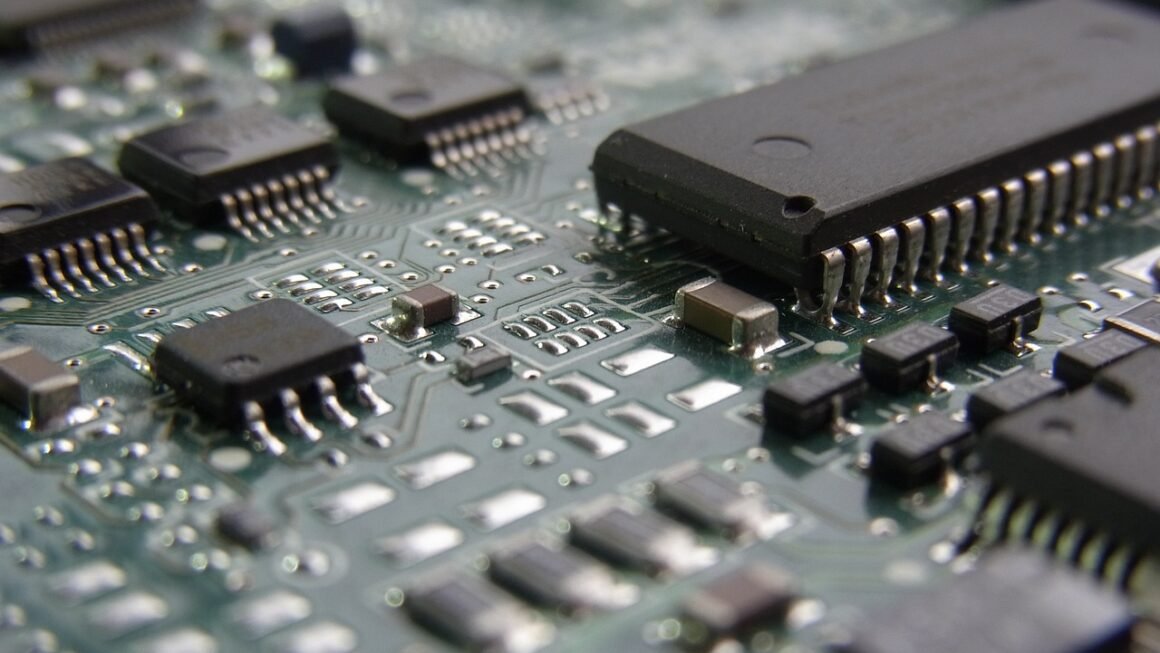Quantum cryptography, a revolutionary field merging quantum mechanics and cryptography, offers the promise of unbreakable security in a world increasingly reliant on digital communication. While classical cryptography faces growing threats from powerful computers, especially quantum computers, quantum cryptography leverages the fundamental laws of physics to safeguard information, creating a future where data security is paramount. This blog post delves into the depths of quantum cryptography, exploring its principles, applications, and future potential.
Understanding Quantum Cryptography
Quantum cryptography isn’t just an upgrade to existing encryption methods; it’s a paradigm shift. It relies on the laws of quantum mechanics to encrypt and transmit data, making it inherently secure against eavesdropping. Instead of relying on mathematical complexity, it exploits the physical properties of quantum particles, like photons, to guarantee secure key distribution.
Key Principles of Quantum Cryptography
At its core, quantum cryptography rests on two fundamental principles of quantum mechanics:
- Quantum Superposition: A quantum bit, or qubit, can exist in multiple states simultaneously, unlike classical bits that are either 0 or 1. This allows for encoding more information.
- Quantum Entanglement: Two or more qubits can be linked in such a way that they share the same fate, no matter how far apart they are. Measuring the state of one instantly determines the state of the other.
- Heisenberg’s Uncertainty Principle: It is impossible to know both the position and momentum of a quantum particle with perfect accuracy. Any attempt to measure a quantum state inevitably disturbs it.
The BB84 Protocol: A Cornerstone of Quantum Key Distribution
The BB84 protocol, developed by Charles Bennett and Gilles Brassard in 1984, is one of the most well-known quantum key distribution (QKD) protocols. It involves the following steps:
The beauty of BB84 lies in its security. Any attempt by Eve to intercept and measure the photons will inevitably disturb their polarization states. Alice and Bob can detect this disturbance by comparing a subset of their key bits, alerting them to the presence of an eavesdropper.
The Advantages of Quantum Cryptography
Unlike traditional cryptography, which relies on the computational difficulty of mathematical problems, quantum cryptography’s security is based on the fundamental laws of physics. This makes it theoretically unbreakable, even by powerful quantum computers.
Unconditional Security
- Guaranteed Security: QKD offers information-theoretic security, meaning its security is guaranteed by the laws of physics, regardless of the eavesdropper’s computational power. This is a stark contrast to classical cryptographic algorithms which are vulnerable to advances in computational power, including quantum computing.
- Eavesdropping Detection: Any attempt to intercept the quantum key exchange will introduce errors that are detectable by Alice and Bob, alerting them to the presence of an eavesdropper and preventing the compromised key from being used. The very act of observation alters the quantum state.
Long-Term Security
- Future-Proofing: As quantum computers become more powerful, classical encryption methods are at risk of being broken. Quantum cryptography offers a future-proof solution, as its security is not based on computational complexity.
- Protection Against Store-Now-Decrypt-Later Attacks: Even if an attacker intercepts encrypted data today and stores it, they will not be able to decrypt it in the future using quantum computers if the key was generated using QKD.
Enhanced Privacy
- Reduced Trust Assumptions: QKD minimizes the need to trust third parties. The security of the key exchange relies on the physical properties of quantum particles rather than the trustworthiness of a central authority.
Challenges and Limitations
While quantum cryptography offers unprecedented security, it also faces several challenges that limit its widespread adoption.
Distance Limitations
- Photon Loss: Photons can be lost or scattered during transmission through optical fibers, limiting the distance over which QKD can be implemented. The typical distance is limited to a few hundred kilometers, depending on the fiber quality and the wavelength of the photons.
- Quantum Repeaters: To overcome distance limitations, quantum repeaters are being developed to extend the range of QKD. Quantum repeaters can regenerate and amplify quantum signals without measuring them, preserving their quantum state. However, building practical and reliable quantum repeaters is a major technological challenge.
Cost and Complexity
- High Implementation Costs: QKD systems are currently expensive to deploy, requiring specialized hardware and expertise. The cost of single-photon sources, detectors, and other components can be prohibitive for many applications.
- Complexity of Implementation: Implementing QKD requires careful engineering to minimize noise and ensure the fidelity of the quantum signals. Maintaining the delicate quantum states is a challenging task.
Integration with Existing Infrastructure
- Compatibility Issues: Integrating QKD systems with existing communication networks can be complex. QKD typically provides only a secret key, which must then be used with a classical encryption algorithm to encrypt and decrypt data.
- Standardization: The lack of standardized protocols and interfaces for QKD systems hinders interoperability and widespread adoption.
Applications of Quantum Cryptography
Despite the challenges, quantum cryptography is finding its way into various applications where security is paramount.
Government and Military
- Secure Communications: Governments and military organizations use QKD to protect their most sensitive communications from espionage. QKD can ensure the confidentiality of diplomatic cables, military plans, and other classified information.
- Critical Infrastructure Protection: QKD can be used to secure critical infrastructure, such as power grids, water supplies, and transportation networks, against cyberattacks.
Financial Institutions
- Secure Banking Transactions: Banks and financial institutions use QKD to protect sensitive financial transactions from fraud and theft. QKD can secure online banking, credit card transactions, and electronic fund transfers.
- High-Frequency Trading: QKD can be used to secure high-frequency trading algorithms and data, preventing market manipulation and insider trading.
Healthcare
- Secure Medical Records: Hospitals and healthcare providers can use QKD to protect the privacy and confidentiality of patient medical records. QKD can secure electronic health records, medical imaging data, and other sensitive information.
- Pharmaceutical Research: QKD can be used to protect valuable pharmaceutical research data from competitors and cyberattacks.
Example: Quantum-Secured Data Center
Imagine a data center storing highly sensitive government or financial information. Using QKD, all communication between servers within the data center, and between the data center and external locations, can be secured. QKD generates and distributes encryption keys, which are then used with classical encryption algorithms like AES to encrypt the actual data. Even if an attacker gains physical access to the data center and intercepts the encrypted data, they will be unable to decrypt it without the quantum keys, which are constantly changing and secured by the laws of physics.
Conclusion
Quantum cryptography represents a significant advancement in the field of data security, offering the potential for unbreakable encryption and enhanced privacy. While challenges remain in terms of cost, distance limitations, and integration with existing infrastructure, the benefits of QKD are undeniable, particularly for applications where security is paramount. As quantum technology continues to evolve, quantum cryptography is poised to play an increasingly important role in safeguarding our digital world. The key takeaway is to monitor the progress of QKD and be prepared to adopt it when the technology matures and becomes more accessible. The future of secure communication may very well depend on it.



